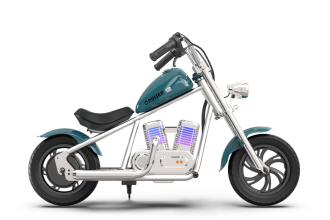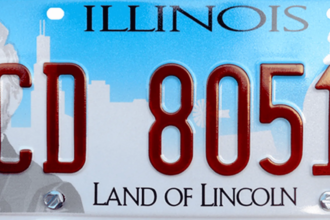Electric carts are popular for offering a practical and environmentally responsible means of mobility for a variety of uses. Though street-legal electric carts are becoming popular for short-distance commuting in neighborhoods, small towns, and metropolitan areas, golf carts are a familiar sight on golf courses and private estates. These two kinds of carts are intended for diverse uses and contain certain characteristics that distinguish them.
Structure and Design
The design and construction of street-legal electric carts and standard golf carts differ greatly. A regular golf cart is designed primarily for use on golf courses. Golf carts are smaller and designed not to handle rough terrain or heavy-duty travel.
Alternatively, street legal electric carts are constructed with more sturdy designs to negotiate several kinds of roads and circumstances. To satisfy safety criteria, they might contain improved structural reinforcements.
Stronger chassis, bigger wheels, and sturdier axles on these carts support extra weight and higher speeds. Street-legal carts also fit suburban settings since they boost a more polished look with a stylish exterior.
Velocity Capabilities
A major notable difference between street-legal electric carts and standard golf carts is speed. Golf carts move at low speeds between 12 to 15 miles per hour. Navigating golf courses securely and quickly within the speed range avoids damage to the grass or disturbance of other golfers.
Alternatively, street-legal electric carts are designed to run faster, and their speeds range from 20 to 25 miles per hour. This speed range is best in places like residential zones or city streets where speed restrictions are lower. Street-legal carts are fitted with more strong motors and advanced stopping systems to reach these greater speeds.
Safety Notes
Safety is a major concern where street-legal electric carts excel above standard golf carts. Street-legal electric carts are designed to run on public highways, where safety is crucial. These carts include a range of safety elements to satisfy regulatory criteria including headlights, taillights, turn signals, brake lights, and side mirrors.
Street-legal carts also frequently feature seat belts, windshields, horn systems, and rearview cameras. These characteristics guarantee not only traffic law compliance but also road user protection.
Intended use and adaptability
Another popular reason for using these carts is their intended usage. Regular golf carts are designed specifically for moving golfers and their equipment over golf courses. On flat, grassy areas, they are best suited for short-distance travel but they are not built to negotiate metropolitan roads or rugged terrain.
A street legal electric carts are made with consideration for adaptability. It includes conducting errands, commuting within communities, and moving people around parks, campuses, and leisure places. Their versatility and traffic rules make them a sensible choice for diverse living and usage.
Environmental influence
Eco-friendly alternatives for conventional fuel-powered vehicles include both street-legal electric carts and standard golf carts. However, depending on use and design, their environmental effect may vary.
Regular golf carts have low energy consumption since they are operated sporadically and for brief periods. This fits with their goal of providing convenience in limited areas. But street-legal electric carts are designed for more frequent and extensive use. These advanced batteries are bigger and provide improved efficiency and range.
To reduce their carbon impact even more, many street-legal carts also have energy-saving features. The possibility of substituting a street-legal electric cart for quick car trips will help consumers to be environmentally aware and greatly reduce greenhouse gas emissions.
Maintenance and Cost
For users considering between a street-legal electric cart and a standard golf cart, cost and maintenance are major factors. Golf carts are simpler in design and require fewer components so they are more reasonably priced initially.
Since these carts are not exposed to the wear and tear related to road use, they require low maintenance expenses. Though it costs initially, street-legal electric carts usually make sense with their added features, increased safety, and adaptability.
Particularly if they are used heavily, these carts require more regular maintenance to guarantee compliance with traffic laws. Many manufacturers also provide warranties and service packages that enable cost control over time.
Personalization choices and style variations
The degree of customizing and styling options available is another important distinction between street-legal electric carts and standard golf carts. Usually with simple seats, a canopy, and little decorative accents, regular golf carts have a typical look.
Though some owners personalize their golf carts for enhanced comfort or aesthetic appeal, most changes are limited to private use. Alternatively, street-legal electric carts are sold with a large spectrum of customizing choices to fit personal tastes and pragmatic requirements.
To improve comfort and use, one can also add extra elements including sophisticated lighting systems, audio configurations, and weatherproof enclosures. Luxurious and utility-oriented upgrades make street-legal carts appealing to a wider audience including families, companies, and environmentally aware commuters.
Battery Technology
Differentiating street-legal electric carts from standard golf carts depends greatly on battery technology. Regular golf carts have low charging needs and typically run for the average length of leisure activities. To satisfy road use, street-legal electric carts require more advanced battery systems. These carts have larger-capacity batteries, usually lithium-ion technology since they have faster speed capabilities and go farther distances. These batteries are suited for daily commuting or regular errands since they have longer ranges and quicker recharge periods. Features in advanced models like energy management systems and battery monitoring applications maximize power use and map paths more precisely.
Urban and Community Integration
Particularly in highly populated areas and environmentally friendly communities, street-legal electric carts are progressively considered as a solution to modern urban problems. For negotiating locations with limited parking or heavy human traffic, their small size, quiet running, and little environmental effect make them perfect.
To further promote low-speed vehicles like street-legal carts, some communities have set aside specific lanes or parking places to handle them. Regular golf carts are not made for blending into public areas. With their adherence to traffic rules and safety guidelines, street-legal electric carts are designed for easy integration and offer a more sensible solution for short-distance transportation.














